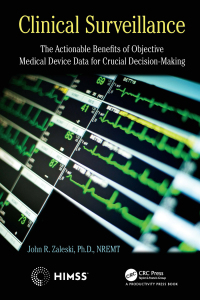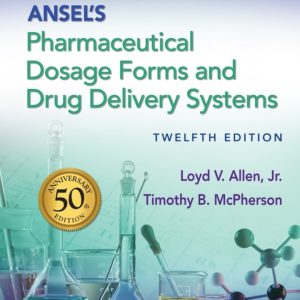Buy Clinical Surveillance: The Actionable Benefits of Objective Medical Device Data for Critical Decision-Making 1st Edition PDF ebook by author John R. Zaleski – published by Productivity Press in 2021 and save up to 80% compared to the print version of this textbook. With PDF version of this textbook, not only save you money, you can also highlight, add text, underline add post-it notes, bookmarks to pages, instantly search for the major terms or chapter titles, etc.
You can search our site for other versions of the Clinical Surveillance: The Actionable Benefits of Objective Medical Device Data for Critical Decision-Making 1st Edition PDF ebook. You can also search for others PDF ebooks from publisher Productivity Press, as well as from your favorite authors. We have thousands of online textbooks and course materials (mostly in PDF) that you can download immediately after purchase.
Note: e-textBooks do not come with access codes, CDs/DVDs, workbooks, and other supplemental items.
eBook Details:
Full title: Clinical Surveillance: The Actionable Benefits of Objective Medical Device Data for Critical Decision-Making 1st Edition
Edition: 1st
Copyright year: 2021
Publisher: Productivity Press
Author: John R. Zaleski
ISBN: 9780429353444, 9781000215861
Format: PDF
Description of Clinical Surveillance: The Actionable Benefits of Objective Medical Device Data for Critical Decision-Making 1st Edition:
“For more than a decade, the focus on information technology has been on capturing and sharing data from the patient within an all-encompassing record, to promote improved longitudinal oversight in the care of the patient. There are both those who agree and disagree as to whether this goal has been met, but it is certainly evolving. A key element to improved patient care has been the automated capture of data from durable medical devices. Medical devices are the source for (mostly) objective data, from imagery to time-series histories of vital signs and spot-assessments of patients. The capture and use of these data to support clinical workflow has been written about and debated thoroughly. Yet, the use of these data for guidance clinically have been targeted in various papers published within respected medical journals, but without coherent focus on the general subject of the clinically actionable benefits of objective medical device data for clinical decision-making purposes. Hence, the uniqueness of this book is in providing a single point-of-capture for the targeted clinical benefits of medical device data – both electronic-health-record-based and real-time – for improved clinical decision making at the point of care, and the use of these data to address and assess specific types of clinical surveillance. This book focuses on the use of objective, continuously collected medical device data for the purpose of identifying patient deterioration, with a primary focus on those data normally obtained from both the higher-acuity care settings on intensive care unit and the lower-acuity settings of general care wards. It includes examples of conditions which demonstrate earlier signs of deterioration including systemic inflammatory response syndrome, opioid-induced respiratory depression, shock induced by systemic failure and more. The book is designed to provide education on the use of these data, by example, for clinical intervention in order to identify examples of how to guide care using automated durable medical device data from higher and lower acuity care settings. The book also includes real-world examples of applications that are of high value to clinical end-users and health systems”–





